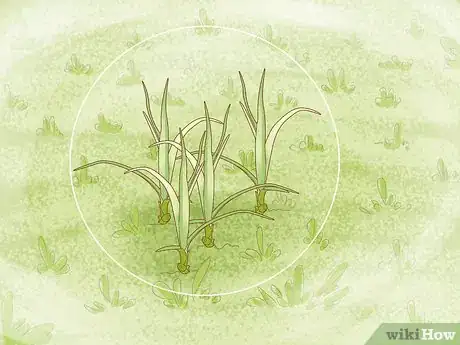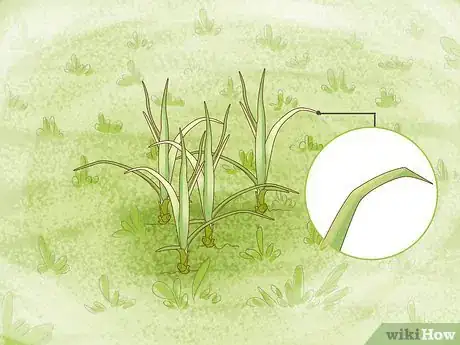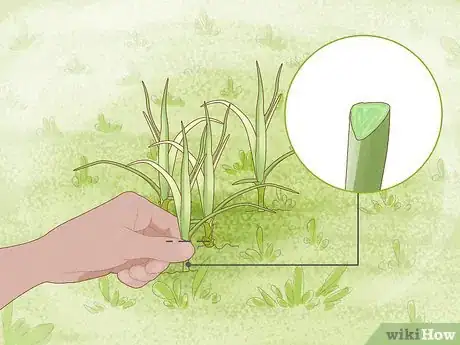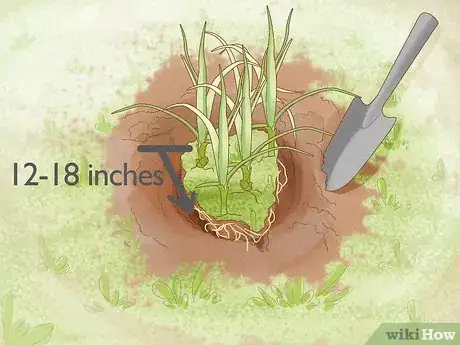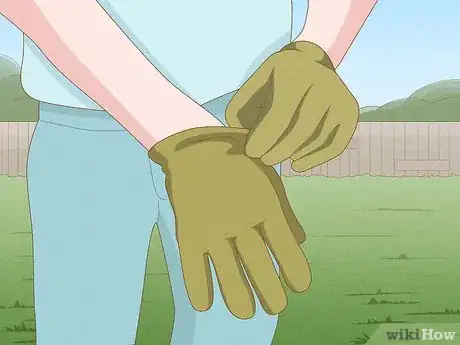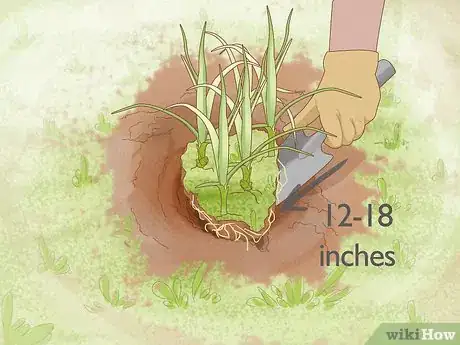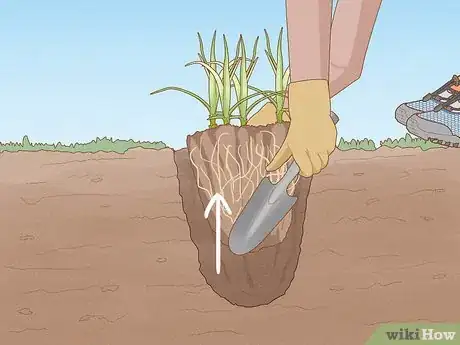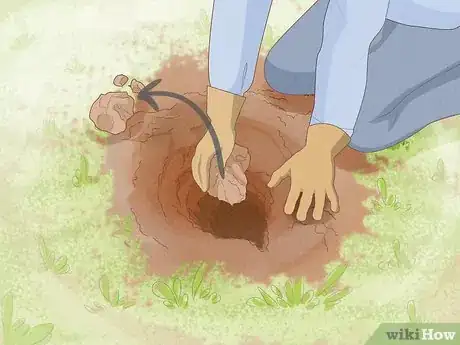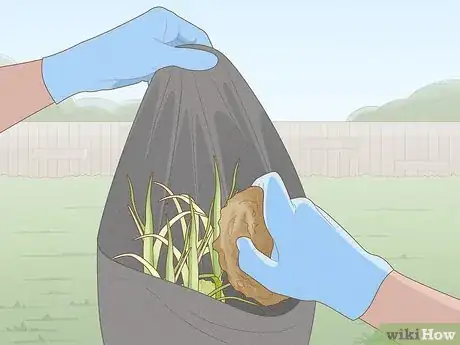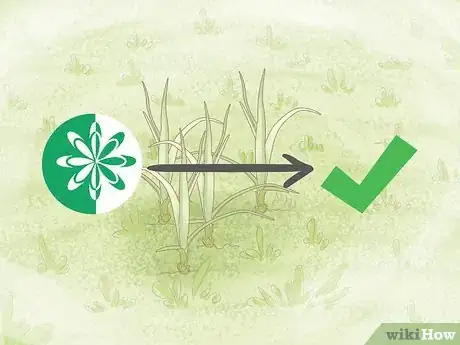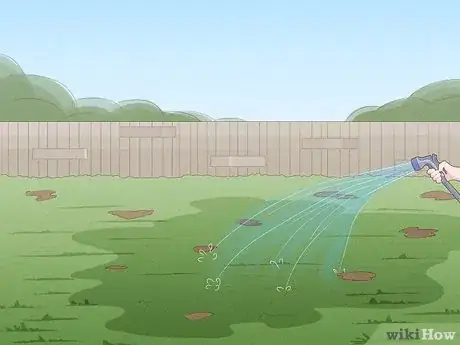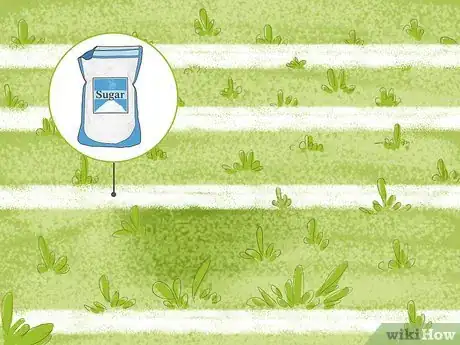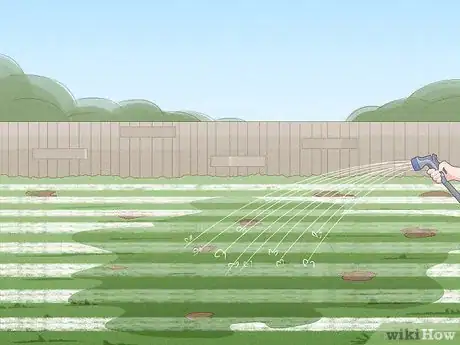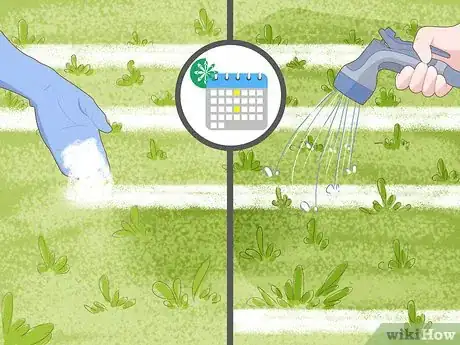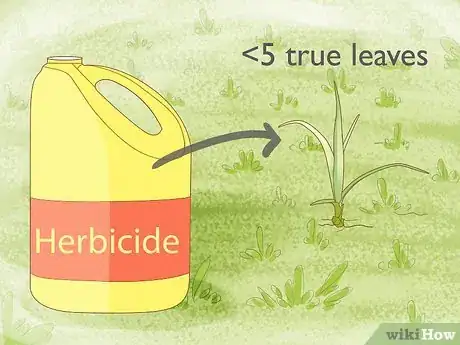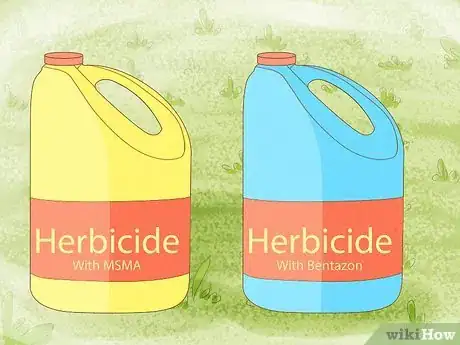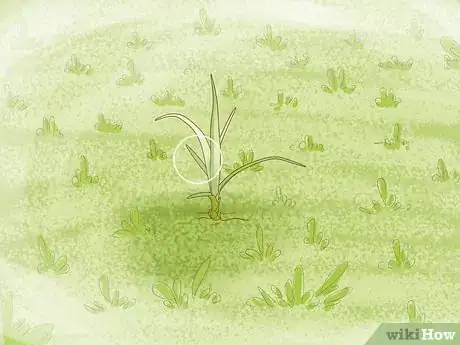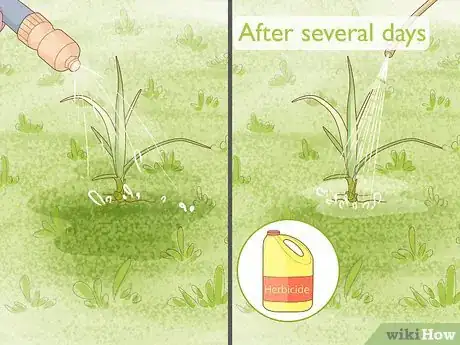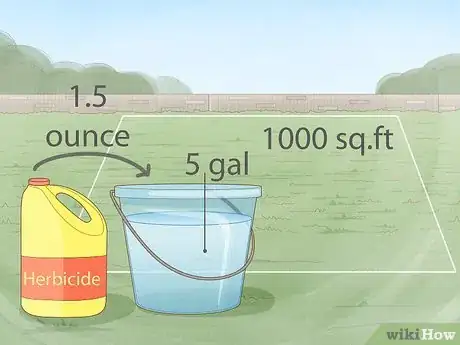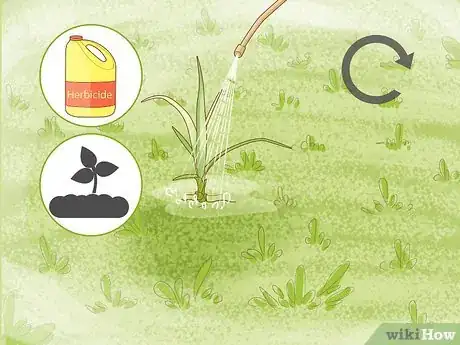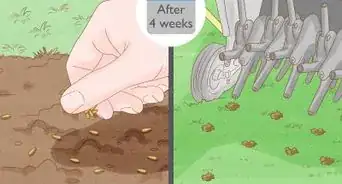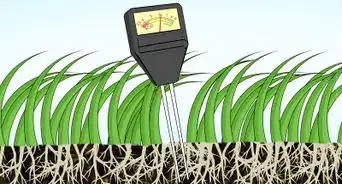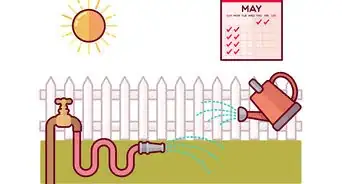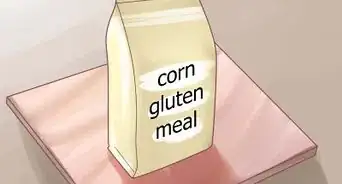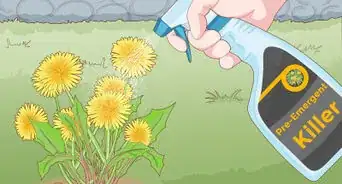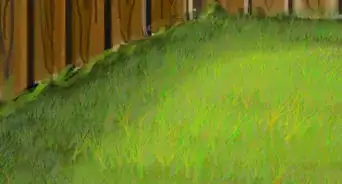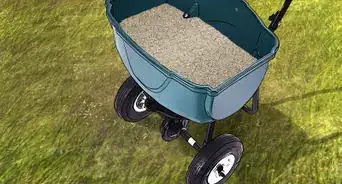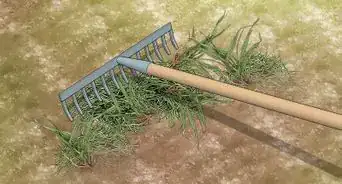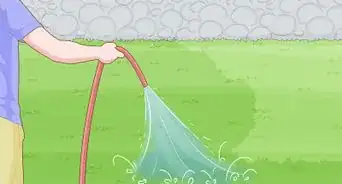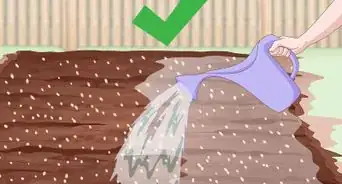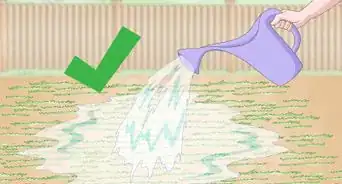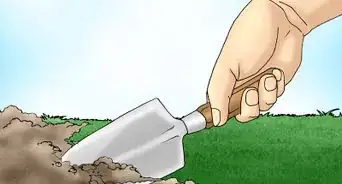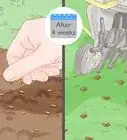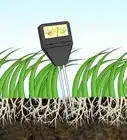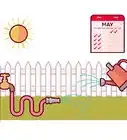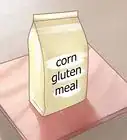This article was co-authored by Ben Barkan. Ben Barkan is a Garden and Landscape Designer and the Owner and Founder of HomeHarvest LLC, an edible landscapes and construction business based in Boston, Massachusetts. Ben has over 12 years of experience working with organic gardening and specializes in designing and building beautiful landscapes with custom construction and creative plant integration. He is a Certified Permaculture Designer, is licensed Construction Supervisor in Massachusetts, and is a Licensed Home Improvement Contractor. He holds an associates degree in Sustainable Agriculture from the University of Massachusetts Amherst.
There are 10 references cited in this article, which can be found at the bottom of the page.
wikiHow marks an article as reader-approved once it receives enough positive feedback. In this case, 80% of readers who voted found the article helpful, earning it our reader-approved status.
This article has been viewed 533,227 times.
Nut grass, also called nutsedge, is a horrifically resilient weed that plagues many a lawn. It has strong roots and nodules that are often referred to as "nuts" (hence the name). The most thorough way to rid your lawn of nut grass is by removing the plant, root and all, by hand. You can also try chemical herbicides, however, or you can coat the grass in sugar as an organic alternative.
Steps
Identify Nutgrass
-
1Look for patches of grass that appear out of place. Nutgrass generally grows taller and looks lighter than the rest of your grass. Since it is similar to other grass varieties, small patches can be difficult to notice unless you are specifically looking for them.
-
2Examine the blades. Kneel on the ground and look at the shape and thickness of the grass blades growing in out of place patches. Nutgrass has thick, stiff blades that shoot up from stems in sets of three. Most normal varieties of grass have two blades that shoot up from a single stem.[1]Advertisement
-
3Examine the stems. Break a stem of potential nutgrass off and look at the broken end. Nutgrass has a triangular stem with a solid center, while most normal grasses have rounded stems. Many normal grasses are also more hollow inside than they are solid.[2]
-
4Carefully dig down to the root of the nutgrass. If you suspect that you have nutgrass based on the appearance of the upper half of the plant, you can either proceed to remove the grass immediately or you can dig down to the root to confirm your suspicions before taking further action. Use a garden trowel to cautiously dig beside the patch of grass and look for any nut-shaped nodules at the root. You may need to dig as deep as 12 to 18 inches (30 to 46 centimeters).[3]
Removal by Hand
-
1Slip on a pair of gardening gloves. You will need to dig into the dirt quite a bit using this method, and gardening gloves should reduce the amount of dirt you get on your skin and under your nails.
-
2
-
3Gently pry the nut grass, roots and all, out of the ground. Doing this gently is vital to reduce the number of roots that break off, as well as the number of pieces those roots break into.[6]
-
4Dig out any stray roots. If any roots remain, there is still some chance that the nut grass can return.
-
5Put the weeds into a garbage bag, along with the soil you dug out simultaneously. Dispose of the weeds in your trash. Do not throw them into a pile or into a compost heap, since you may end up spreading them into another area of your lawn by doing so.
Using Sugar
-
1Perform this procedure in spring. It proves most effective at the start of the growing season, when nut grass is just barely beginning to germinate and sprout.[7]
-
2Use a hose to water the lawn. You do not need to soak it, but the lawn should be evenly moist down to the soil.
-
3Sift sugar over your lawn in straight lines. Walk up and down the lawn in straight lines and at a steady pace. Pour the sugar through a sifter as you walk, continually turning the handle of the sifter the make sure that the sugar falls on the grass in even amounts.
- This is no mere folk remedy. Sugar actually "eats" the nut grass while nourishing microbes that have a positive effect on your lawn.
-
4Spray the lawn once more using a hose. Do not saturate the grass, since doing so will wash the sugar away. Spray the lawn with a light mist, providing just enough water to re-moisten the blades of grass and coax the sugar down into the soil and the roots of the lawn.
-
5Repeat this procedure at least twice more throughout the spring. The nut grass may not die off completely after the first treatment, but after a couple more, all of it should be dead.
Using Chemical Control
-
1Use herbicide before the nut grass develops five true leaves. Leafy nut grass has too many obstacles, preventing herbicides from sliding down to the "nuts" and the root. Herbicides work best early in the season, while nut grass is still young and has minimal leaves.[8]
-
2Select an appropriate herbicide. Products that contain MSMA or products with a chemical called bentazon work best.[9] Nut grass is a common enough problem, so typically speaking, herbicides that work against the weed will be labeled as "nut grass killers."
-
3Allow the grass to grow for a few days prior to application. The herbicide works best when the weed is growing vigorously, and may not be as effective if applied immediately after cutting the weed down. Wait two or more days after your last lawn mowing before applying the chemical to the lawn.[10]
-
4Apply the herbicide during a dry period. Wait several days after your last watering, and do not spray the herbicide if you may get rain four hours after application or if you expect heavy rains to follow in coming days. Water will wash the chemical away, and it may not have the chance to do its job before that happens.
-
5Read the instructions on the label of your herbicide bottle to determine how to apply it properly.[11] You will usually spray diluted MSMA herbicide over your entire lawn. For instance, the instructions may tell you to mix 1.5 ounces (45 milliliters) of chemical into 5 gallons (20 liters) of water to treat 1000 square feet (92.9 square meters) of lawn.
-
6Repeat the treatment several times during the growing season. Warm season grass may only require two applications, but cool season grass may need four to eight applications before the nut grass dies off completely.
Community Q&A
-
QuestionHow do I get rid of nutgrass and prevent it from coming back?
 Community AnswerI was so desperate to get rid of the nutgrass in my ground cover that I made a tool (taped 6 cotton buds together) and applied poison to each individual strand of the grass. I was very careful to avoid the ground cover. It was very difficult to get enough to coat the grass without harming the ground cover. I did this over a few days to the same strands until I saw they were dead. They have never returned.
Community AnswerI was so desperate to get rid of the nutgrass in my ground cover that I made a tool (taped 6 cotton buds together) and applied poison to each individual strand of the grass. I was very careful to avoid the ground cover. It was very difficult to get enough to coat the grass without harming the ground cover. I did this over a few days to the same strands until I saw they were dead. They have never returned. -
QuestionI have nutgrass in my flower beds; I thought I had dug all of it out, but it continues to pop up. What is best method to kill it without killing lantana?
 Community AnswerNut grass "nut" is 30 feet below and can stay dormant for years. Try using a liquid weed killer to keep it under control. I have yet to kill a lantana even with straight weed killer on it. They are very hardy.
Community AnswerNut grass "nut" is 30 feet below and can stay dormant for years. Try using a liquid weed killer to keep it under control. I have yet to kill a lantana even with straight weed killer on it. They are very hardy. -
QuestionWhy do people want to get rid of nutgrass?
 Community AnswerBecause it's unsightly, chokes other plants, takes the nutrients in the soil for itself, and generally drives most people crazy!
Community AnswerBecause it's unsightly, chokes other plants, takes the nutrients in the soil for itself, and generally drives most people crazy!
Warnings
- Keep children and animals off the grass for 24 to 72 hours after applying a chemical weed killer. Many of these chemicals are toxic if consumed.⧼thumbs_response⧽
- Be aware of the fact that broad-application chemical herbicides, especially those containing MSMA, can discolor your grass after frequent application.⧼thumbs_response⧽
Things You'll Need
- Gardening gloves
- Garden trowel
- Garden hose
- Sifter
- Sugar
- Herbicide
References
- ↑ https://weeds.brisbane.qld.gov.au/weeds/nutgrass
- ↑ https://weeds.brisbane.qld.gov.au/weeds/nutgrass
- ↑ https://www.latimes.com/home/la-xpm-2013-mar-07-la-lh-nutgrass-nutsedge-weed-control-20130304-story.html
- ↑ https://www.myhometurf.com.au/lawn-tips/nut-grass/
- ↑ https://hgic.clemson.edu/factsheet/nutsedge/
- ↑ https://www.myhometurf.com.au/lawn-tips/nut-grass/
- ↑ https://hgic.clemson.edu/factsheet/nutsedge/
- ↑ http://ipm.ucanr.edu/PMG/PESTNOTES/pn7432.html
- ↑ https://extension.psu.edu/controlling-yellow-nutsedge-in-agronomic-crops-an-integrated-approach
- ↑ https://extension.uga.edu/publications/detail.html?number=B978&title=Weed%20Control%20in%20Home%20Lawns#title6
- ↑ https://extension.uga.edu/publications/detail.html?number=B978&title=Weed%20Control%20in%20Home%20Lawns#title7
- How to Get Rid of Stuff: How to Get Rid of Nut Grass
- The Gemini Geek: How to Get Rid of Nut Grass
About This Article
To get rid of nutgrass, slip on a pair of gardening gloves and use a small shovel to carefully dig down to the roots of the plant. The roots can be up to 12 to 18 inches deep, so keep digging until you find the ends of the root system. Once you reach the bottom of the roots, carefully dig out the plant to avoid leaving any roots behind. Then, dispose of the plant right away so it won't have a chance to spread. To help prevent nutgrass, each spring you should water your lawn and then sift sugar onto the grass. To learn how to kill nutgrass with herbicides, read on!
